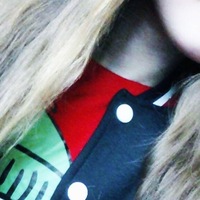
Вопрос задан 12.06.2023 в 01:59.
Предмет Английский язык.
Спрашивает Соколов Семён.
Прочитайте текст о губках. Установите истинность утверждений – TRUE, FALSE или NOT STATED. Most
of the 5,000 species of sponges live in warm, shallow salt water near coastlines, although some are found at ocean depths of 8,500 m or more. A few species live in freshwater rivers, lakes, and streams. The colors, shapes, and sizes of sponges vary. Saltwater sponges are brilliant red, orange, yellow, or blue, while freshwater sponges are usually a dull brown or green. Some sponges have radial symmetry, but most are asymmetrical. Sponges can be smaller than a marble or larger than a compact car. Adult sponges live attached to one place unless they are washed away by strong waves or currents. Organisms that remain in one place during their lifetimes are called sessile. They often cohabit with other sponges in permanent groups called colonies. Early scientists classified sponges as plants because they didn’t move. As microscopes were improved, scientists observed that sponges couldn’t make their own food, so sponges were reclassified as animals. Fossil evidence shows that sponges appeared on Earth about 600 million years ago. Because sponges have little in common with other animals, many scientists have concluded that sponges probably evolved separately from all other animals. Sponges living today have many of the same characteristics as their fossilized ancestors. In their watery environments, sponges play many roles. They interact with many other animals such as worms, shrimp, snails, and sea stars. These animals live on, in, and under sponges. Sponges also are important as a food source for some snails, sea stars, and fish. Certain sponges contain photosynthetic bacteria and protists that provide oxygen and remove wastes for the sponge. Only about 17 species of sponges are commercially important. Humans have long used the dried and cleaned bodies of some sponges for bathing and cleaning. Most sponges you see today are synthetic sponges or vegetable loofah sponges, but natural sea sponges still are available. Today scientists are finding other uses for sponges. Chemicals made by sponges are being tested and used to make drugs that fight disease-causing bacteria, fungi, and viruses. These chemicals also might be used to treat certain forms of arthritis. 1. Sponges inhabit only one type of water body. 2. Sponges living in oceans are brighter in colour. 3. Sponges are avoided contact with by other marine creatures. 4. Scientists still do not know what kingdom sponges belong to. 5. Sponges haven’t changed much for a very long time. 6. Sponges are gradually going extinct because of climate change. 7. The predominant number of sponge species yield economic profit. 8. Sponges are used in medicine. 0
0
 0
0
Ответы на вопрос
 Внимание! Ответы на вопросы дают живые люди. Они могут содержать ошибочную информацию, заблуждения, а также ответы могут быть сгенерированы нейросетями. Будьте внимательны. Если вы уверены, что ответ неверный, нажмите кнопку "Пожаловаться" под ответом.
Внимание! Ответы на вопросы дают живые люди. Они могут содержать ошибочную информацию, заблуждения, а также ответы могут быть сгенерированы нейросетями. Будьте внимательны. Если вы уверены, что ответ неверный, нажмите кнопку "Пожаловаться" под ответом.

Отвечает Хан Давид.
Ответ:
1. False
2. True
3. False
4. False
5. True
6. Not stated
7. False
8. True
Объяснение:
1. Губки обитают только в одном типе водной среды. (Ложь)
2. Губки, обитающие в океане, по цвету более яркие. (Правда)
3. Другие морские обитатели избегают контакта с губками. (Ложь)
4. Учёные до сих пор не знают, к какому царству принадлежат губки. (Ложь)
5. Губки не сильно изменились за долгое время. (Правда)
6. Губки постепенно вымирают из-за изменения климата. (Нет информации)
7. Преобладающее количество видов губок приносит прибыль. (Ложь)
8. Губки используются в медицине. (Правда)
 0
0
 0
0

Отвечает нейросеть ChatGpt. Будьте внимательны, ответы нейросети могут содержать ошибочные или выдуманные данные.
- FALSE - Sponges can be found in both saltwater and freshwater environments.
- TRUE - Saltwater sponges are described as brilliant red, orange, yellow, or blue, while freshwater sponges are usually a dull brown or green.
- NOT STATED - The passage does not provide information about whether sponges actively avoid contact with other marine creatures.
- FALSE - The passage states that early scientists initially classified sponges as plants, but later observations led to their reclassification as animals.
- TRUE - The passage mentions that sponges living today have many of the same characteristics as their fossilized ancestors.
- NOT STATED - The passage does not mention anything about sponges going extinct due to climate change.
- FALSE - The passage states that only about 17 species of sponges are commercially important, indicating that the majority of sponge species do not yield economic profit.
- TRUE - The passage mentions that chemicals made by sponges are being tested and used to make drugs that fight disease-causing bacteria, fungi, and viruses, indicating that sponges are used in medicine.
 0
0
 0
0
Похожие вопросы
Топ вопросов за вчера в категории Английский язык
Последние заданные вопросы в категории Английский язык
Предметы
-
Математика
-
Литература
-
Алгебра
-
Русский язык
-
Геометрия
-
Английский язык
-
Химия
-
Физика
-
Биология
-
Другие предметы
-
История
-
Обществознание
-
Окружающий мир
-
География
-
Українська мова
-
Информатика
-
Українська література
-
Қазақ тiлi
-
Экономика
-
Музыка
-
Право
-
Беларуская мова
-
Французский язык
-
Немецкий язык
-
МХК
-
ОБЖ
-
Психология
-
Физкультура и спорт
-
Астрономия
-
Кыргыз тили
-
Оʻzbek tili























